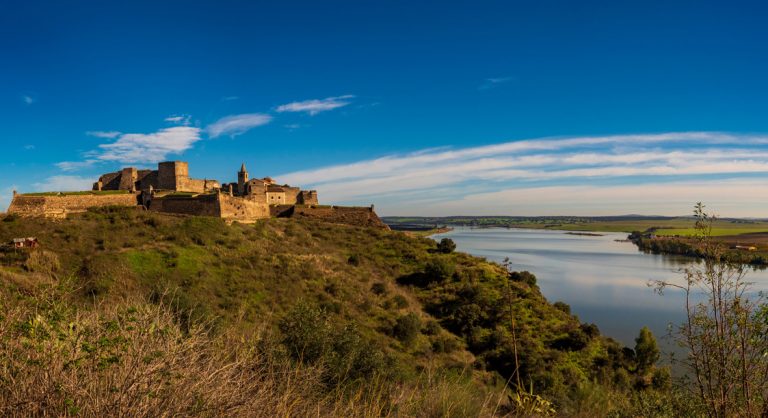Due to its geographical position bordering Spain, and the animosity that existed between the two countries down the years, it seems that just about every town and village in the Alentejo has some kind of defensive remnants—and Juromenha right on the banks of the Guadiana River that divides Portugal and Spain is a fine example.
Once an important powerhouse, the fortress at Juromenha looks out across the peaceful river and beyond to the plains of Olivenza in Spain. Today, left in ruins, it is a shadow of it’s former self and when you visit it is hard to believe that it once played such an important role in the on going skirmishes with the Spanish.
Visit Juromenha
 At only 35 minutes from Estremoz by car, Juromenha makes for a great little drive out. The village itself is unremarkable, whitewashed and sleepy with the usual handful of cafés, but it does have a small jetty below on the riverbank for visitors arriving by boat, a charming Turismo Rural guesthouse with pool and a few restaurants serving hearty Alentejo meals. Tasca D’ Juromenha, which is directly in front of the main castle gate has been recommended to us by friends.
At only 35 minutes from Estremoz by car, Juromenha makes for a great little drive out. The village itself is unremarkable, whitewashed and sleepy with the usual handful of cafés, but it does have a small jetty below on the riverbank for visitors arriving by boat, a charming Turismo Rural guesthouse with pool and a few restaurants serving hearty Alentejo meals. Tasca D’ Juromenha, which is directly in front of the main castle gate has been recommended to us by friends.
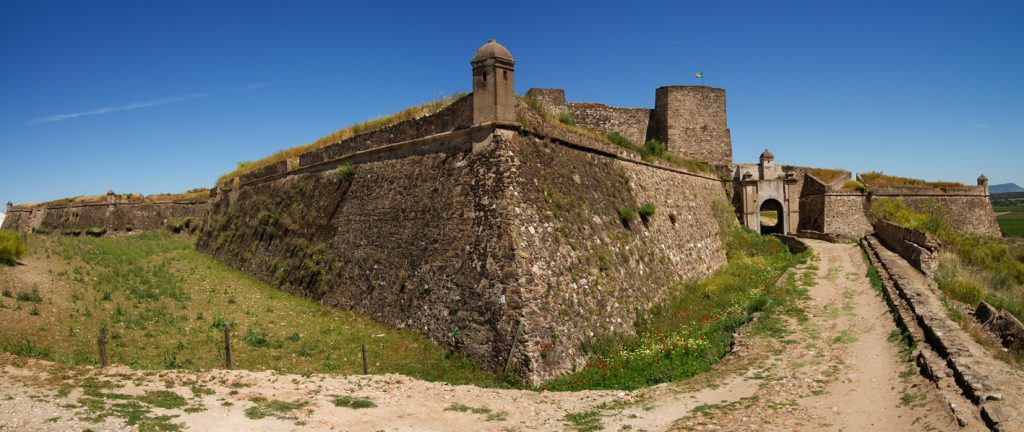
Hiking trail around Juromenha
Combining the visit with a hike into the surrounding countryside, we followed the PR5 trail as promoted by the Alandoal tourist office on their website. A circular hike of around 4 kilometres it can be walked in either direction and starts right in front of the castle. Download map and route description here.
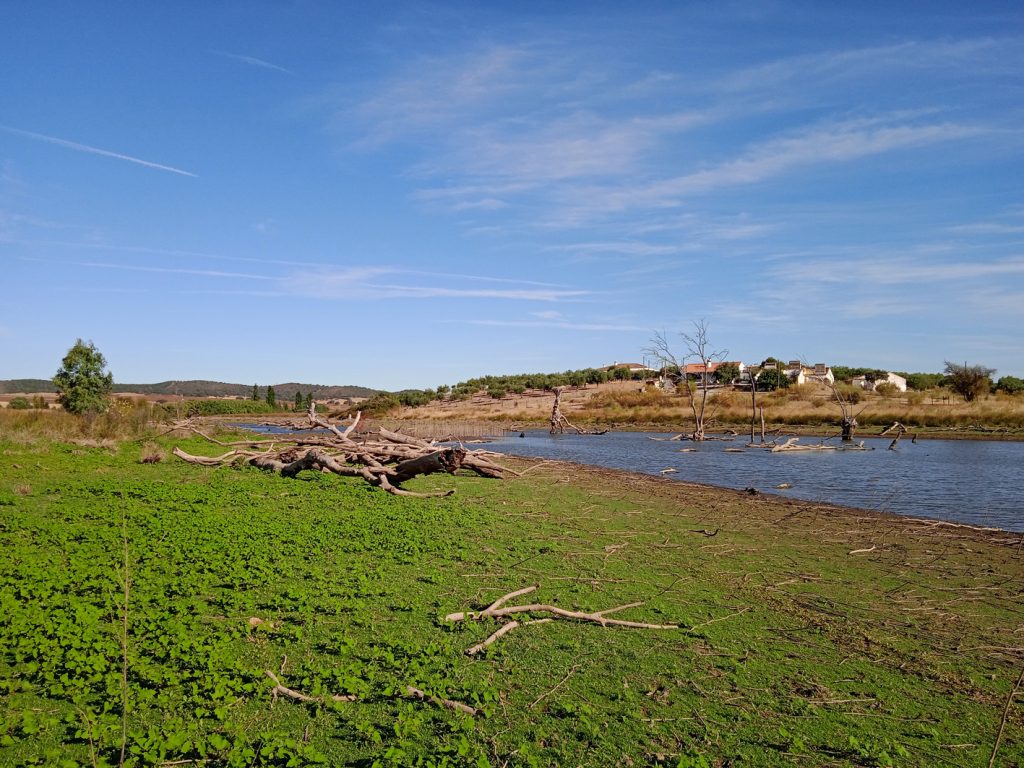 We decided to go north, climbing up a gentle hill to cross wheat fields then dropping down to the banks of the Ribeira de Mures, a tributary of the mighty Guadiana. Unfortunately, when we went the path had not been kept up and was practically impossible to follow once down at the water’s edge as it was so overgrown. However, this part of the walk was teeming with wildlife – wader birds, storks (or cranes, I never know the difference) and even jumping fish in the water. We came across lots of tracks of wild boar, which made us slightly nervous, but kept going and managed to fight our way through the undergrowth unharmed, even without the help of a machete! Once you cross the road, the trail opens up again and it is an easy wander along the banks of the Guadiana, followed by a steep climb up to the castle above via wooden steps cut into the hillside.
We decided to go north, climbing up a gentle hill to cross wheat fields then dropping down to the banks of the Ribeira de Mures, a tributary of the mighty Guadiana. Unfortunately, when we went the path had not been kept up and was practically impossible to follow once down at the water’s edge as it was so overgrown. However, this part of the walk was teeming with wildlife – wader birds, storks (or cranes, I never know the difference) and even jumping fish in the water. We came across lots of tracks of wild boar, which made us slightly nervous, but kept going and managed to fight our way through the undergrowth unharmed, even without the help of a machete! Once you cross the road, the trail opens up again and it is an easy wander along the banks of the Guadiana, followed by a steep climb up to the castle above via wooden steps cut into the hillside.
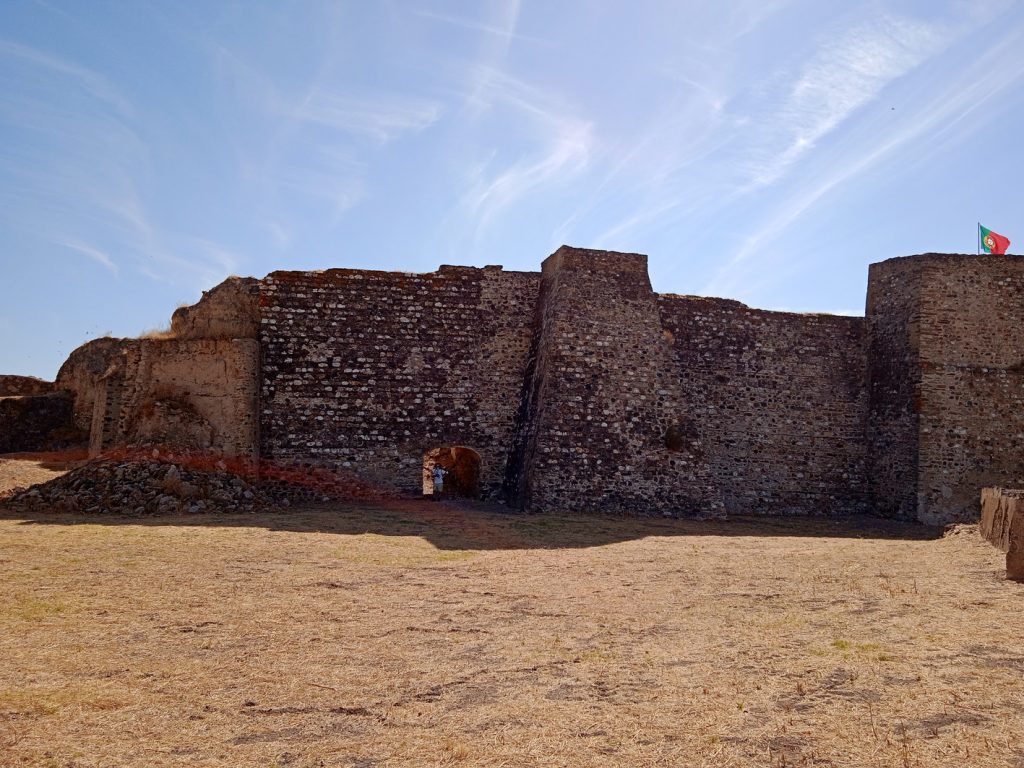
Important historic milestones
The castle itself is in a rather sad state but this means it attracts very few visitors, so you can climb its towers, battlements and turrets at will and the views across the river to Spain are amazing. The compound contains ruins of a moat, old prison and a couple of ruined churches.
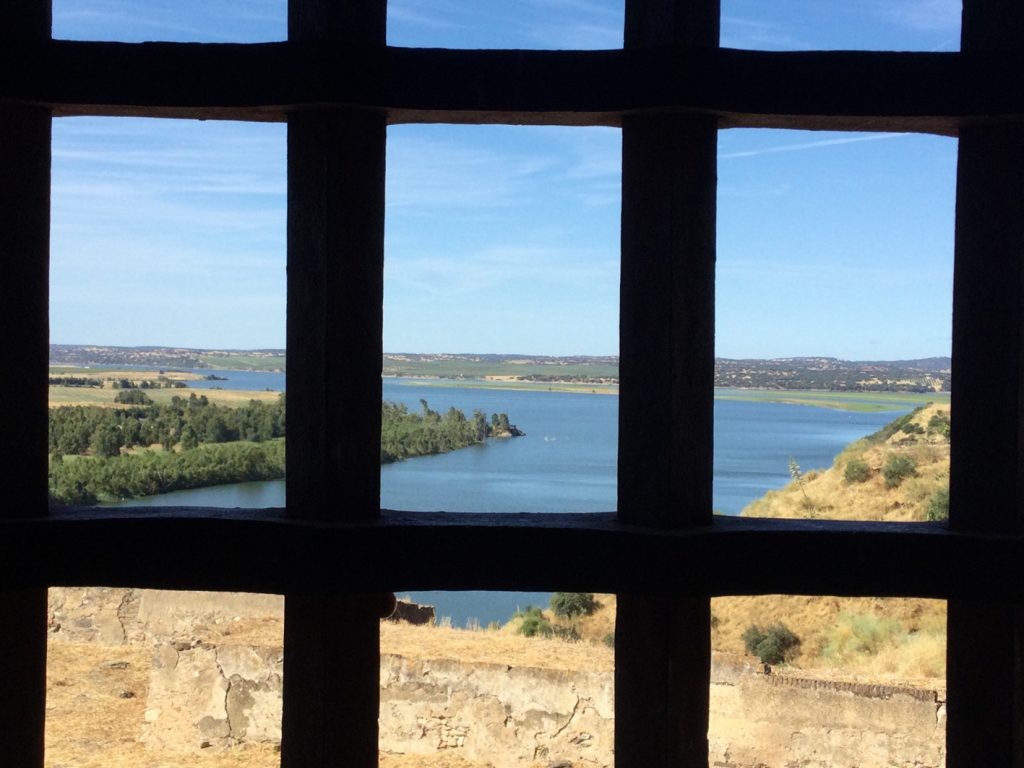 As a testament to its past greatness, the larger chapel within the castle walls, carries the date of what looks like 1143 above its door, and was the venue for two important royal weddings: King Alfonso IV of Portugal married Beatriz of Castile in 1309, and later their daughter Maria of Portugal married King Alfonso XI of Spain in 1328.
As a testament to its past greatness, the larger chapel within the castle walls, carries the date of what looks like 1143 above its door, and was the venue for two important royal weddings: King Alfonso IV of Portugal married Beatriz of Castile in 1309, and later their daughter Maria of Portugal married King Alfonso XI of Spain in 1328.
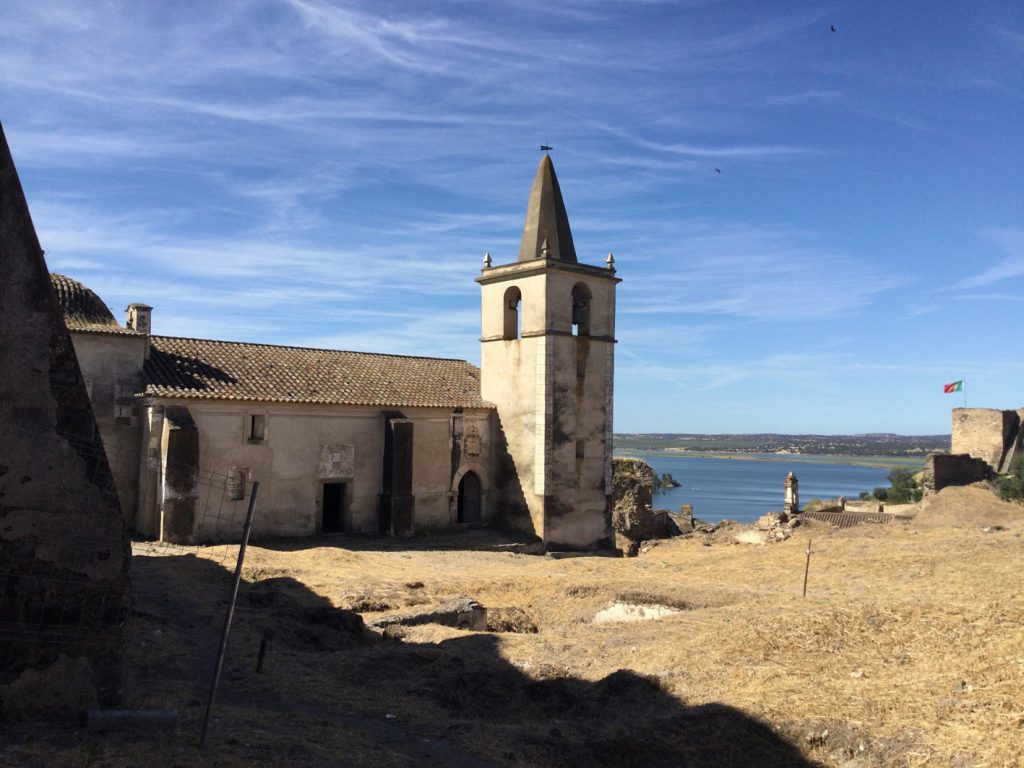 Having changed hands through history a number of times, the fortress at Juromenha has been under the rule of both the Moors and Christians—and has passed back and forth between the Portuguese and Spanish too. Just like the castle of Estremoz, it suffered a major explosion in 1659 when the main gunpowder stores blew up killing the three Jesuit priests and 100 students from Evora who were manning it at the time.
Having changed hands through history a number of times, the fortress at Juromenha has been under the rule of both the Moors and Christians—and has passed back and forth between the Portuguese and Spanish too. Just like the castle of Estremoz, it suffered a major explosion in 1659 when the main gunpowder stores blew up killing the three Jesuit priests and 100 students from Evora who were manning it at the time.
Today’s Juromenha
With so few visitors and the peace and tranquillity of its river location, it is a rather special place to spend some time, especially if like us you are interested in Portuguese history. Although it is neglected and run down, when you stand on its ramparts looking out over Spain, it is easy to imagine how different it must have been at the time of one of the royal weddings…

